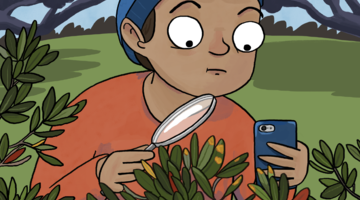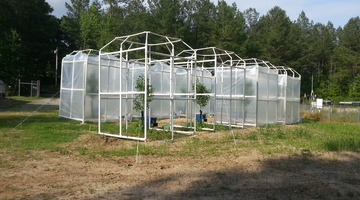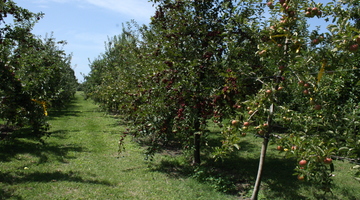

Plant propagation is the process of increasing the number of plants of a particular species or cultivar. Propagation can be via sexual or asexual means. Over the years, horticulturalists have ...
READ MORE

We all need protein to live and stay healthy. However, many protein sources are becoming an increasingly expensive way to meet our needs – both economically and environmentally. Innovators are ...
READ MORE

All tea is made from the leaves of the tea plant, Camellia sinensis. Six main types of tea are produced – white, yellow, green, oolong, black and post-fermented. Each type of tea has a unique ...
READ MORE

Genetic modification has been used in Aotearoa New Zealand since the 1970s. It is used in research laboratories and in contained field tests, in some medicines and medical research and as part of ...
READ MORE

Myrtle rust is a serious biosecurity threat, and help is needed to monitor its spread. This citizen science project aims to gather information on the location, hosts and intensity of this fungal ...
READ MORE

By comparing some features of fossilised plants with the same features of plants living today, scientists hope to be able to learn more about the effect of changing carbon dioxide (CO2) levels in ...
READ MORE

iNaturalist logs hundreds of thousands of photos of flora, fauna and fungi. There are even sound recordings too. Each is described and geo located. iNaturalist is used by citizens and scientists ...
READ MORE

In this unit, students investigate trends and drivers and what may be possible and preferable attributes for new fruit varieties in the future. Purpose To understand the influences currently ...
READ MORE

A Year 9 class visited a local lavender farm as part of a biotechnology unit investigating the production, packaging and marketing of lavender oil for aromatherapy. The purpose of the field trip ...
READ MORE

RNA interference (RNAi) is a biological process in which RNA inhibits gene expression. It is a natural process in cells. As a biotechnology tool, RNA interference ‘silences’ a gene by using a ...
READ MORE
At Zealong, they propagate new tea plants using cuttings to ensure genetic consistency and consistency in taste and quality. It takes 3–4 years from taking the cutting until the plant is mature ...
READ MORE
Grafting and budding are standard techniques used for propagating new apple cultivars. These techniques allow breeders to grow multiple plants of exactly the same genetic material (clones). Here ...
READ MORE
New Zealand company Leaft Foods has developed technology to extract rubisco, a high-value protein found in leafy greens. The company is scaling up the technology while developing food products ...
READ MORE

This timeline follows the discovery of the bacterial disease Psa (Pseudomonas syringae pv. Actinidiae) in New Zealand, the combined efforts to first contain and manage the disease and the ...
READ MORE

About 45 different attributes are assessed at various stages of developing a new apple cultivar at Plant & Food Research. Click on the labels in this interactive to learn about some of these ...
READ MORE

This interactive illustrates a technique used by scientists to generate transgenic plants.
READ MORE